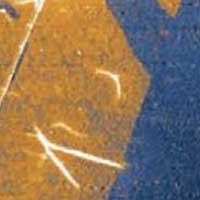 The incorporation of 2D semiconductors in multi-layer, solid-state structures on large scales would allow their integration into functional devices, with exciting potential use in compact, ultra-low energy electronics.
The incorporation of 2D semiconductors in multi-layer, solid-state structures on large scales would allow their integration into functional devices, with exciting potential use in compact, ultra-low energy electronics.
Friday, January 29, 2021
Encasing fragile 2D materials in ultrathin gallium-oxide glass could allow integration into functional low-energy devices
 The incorporation of 2D semiconductors in multi-layer, solid-state structures on large scales would allow their integration into functional devices, with exciting potential use in compact, ultra-low energy electronics.
The incorporation of 2D semiconductors in multi-layer, solid-state structures on large scales would allow their integration into functional devices, with exciting potential use in compact, ultra-low energy electronics.
Scientists observe very slow hot electron cooling in electron-doped quantum dots
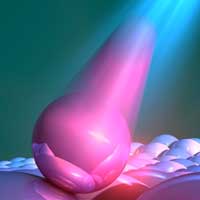 New research results offer exciting opportunities of hot electron harvesting by exploiting carrier-carrier, carrier-phonon and spin-spin interactions in doped quantum dots.
New research results offer exciting opportunities of hot electron harvesting by exploiting carrier-carrier, carrier-phonon and spin-spin interactions in doped quantum dots.
Solvation-driven electrochemical actuation
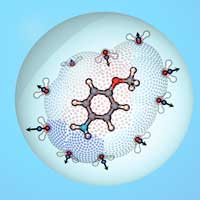 Researchers demonstrated a novel principle of actuation - to transform electrical energy into motion. This actuation mechanism is based on solvation, the interaction between solute and solvent molecules in a solution.
Researchers demonstrated a novel principle of actuation - to transform electrical energy into motion. This actuation mechanism is based on solvation, the interaction between solute and solvent molecules in a solution.
Threads that sense how and when you move
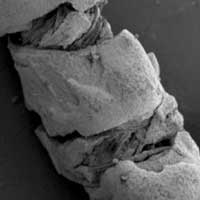 Engineers created thread sensors that can be attached to skin to measure movement in real time, with potential implications for tracking health and performance.
Engineers created thread sensors that can be attached to skin to measure movement in real time, with potential implications for tracking health and performance.
Thursday, January 28, 2021
From heat to spin to electricity: Understanding spin transport in thermoelectric devices
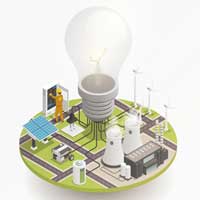 Scientists shed light on how the magnetic properties of 2D interlayers can enhance spin accumulation effects in thermoelectric heterostructures.
Scientists shed light on how the magnetic properties of 2D interlayers can enhance spin accumulation effects in thermoelectric heterostructures.
Researchers create powerful unipolar carbon nanotube muscles
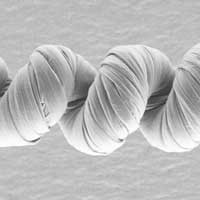 Electrochemically driven carbon nanotube muscles provide an alternative approach to meet the growing need for fast, powerful, large-stroke artificial muscles for applications ranging from robotics and heart pumps to morphing clothing.
Electrochemically driven carbon nanotube muscles provide an alternative approach to meet the growing need for fast, powerful, large-stroke artificial muscles for applications ranging from robotics and heart pumps to morphing clothing.
Chemists settle battery debate, propel research forward
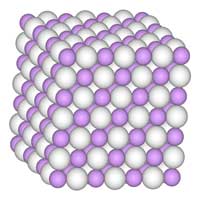 Researchers used ultrabright x-rays to identify lithium hydride and a new form of lithium fluoride in the interphase of lithium metal anodes.
Researchers used ultrabright x-rays to identify lithium hydride and a new form of lithium fluoride in the interphase of lithium metal anodes.
Nanoparticle drug delivery technique shows promise for treating pancreatic cancer
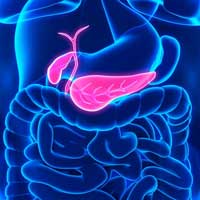 Researchers have designed a new way to deliver pancreatic cancer drugs that could make fighting the disease much easier. Encapsulating cancer drugs in nanoparticles shows potential to target tumors more effectively and avoid danger to other parts of the body.
Researchers have designed a new way to deliver pancreatic cancer drugs that could make fighting the disease much easier. Encapsulating cancer drugs in nanoparticles shows potential to target tumors more effectively and avoid danger to other parts of the body.
Lasing mechanism found in water droplets
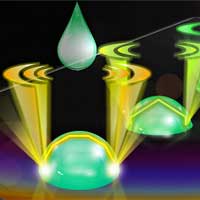 Lasing mechanism at the surface of water droplets can be used to record mechanical changes at biointerfaces.
Lasing mechanism at the surface of water droplets can be used to record mechanical changes at biointerfaces.
Machine learning to predict the performance of organic solar cells
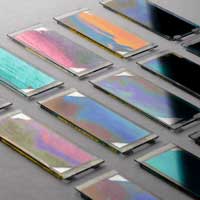 Researchers have demonstrated that by feeding machine-learning algorithms with high-throughput experimental datasets, it is possible to retrieve predictive models for the performance of organic solar cells.
Researchers have demonstrated that by feeding machine-learning algorithms with high-throughput experimental datasets, it is possible to retrieve predictive models for the performance of organic solar cells.
Size of helium nucleus measured more precisely than ever before
 In experiments, an international research collaboration has measured the radius of the atomic nucleus of helium five times more precisely than ever before. With the aid of the new value, fundamental physical theories can be tested and natural constants can be determined even more precisely.
In experiments, an international research collaboration has measured the radius of the atomic nucleus of helium five times more precisely than ever before. With the aid of the new value, fundamental physical theories can be tested and natural constants can be determined even more precisely.
Wednesday, January 27, 2021
A metalens for virtual and augmented reality
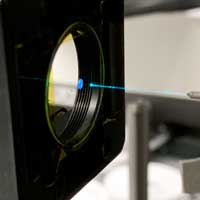 Researchers have developed a two-millimeter achromatic metalenses that can focus RGB (red, blue, green) colors without aberrations and developed a miniaturized display for virtual and augmented reality applications.
Researchers have developed a two-millimeter achromatic metalenses that can focus RGB (red, blue, green) colors without aberrations and developed a miniaturized display for virtual and augmented reality applications.
New technology could upend DNA sequencing for diagnosing certain DNA mutations
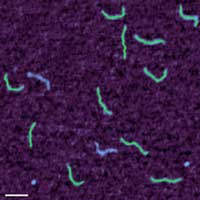 An innovative breakthrough promises to diagnose DNA rearrangement mutations at a fraction of the cost with improved accuracy.
An innovative breakthrough promises to diagnose DNA rearrangement mutations at a fraction of the cost with improved accuracy.
A little soap simplifies making 2D nanoflakes
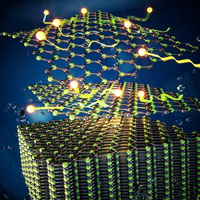 Chemists have found a way to get the maximum amount of quality 2D hBN nanosheets from its natural bulk form by processing it with surfactant (aka soap) and water. The surfactant surrounds and stabilizes the microscopic flakes, preserving their properties.
Chemists have found a way to get the maximum amount of quality 2D hBN nanosheets from its natural bulk form by processing it with surfactant (aka soap) and water. The surfactant surrounds and stabilizes the microscopic flakes, preserving their properties.
Detecting blood disorders made easier with high-performance graphene-based biosensors
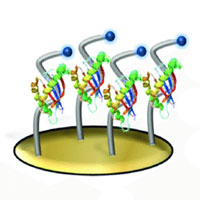 Scientists design a high-performance laser-printed graphene-electrode biosensor, with potential for point-of-care diagnostic applications.
Scientists design a high-performance laser-printed graphene-electrode biosensor, with potential for point-of-care diagnostic applications.
Studies provide answers about promising 2D, layered materials
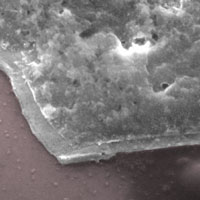 Two new studies answer some crucial questions about two-dimensional, layered materials, which hold great promise for a number of applications, such as alternative platforms for the next-generation of logic and memory devices and flexible energy storage devices.
Two new studies answer some crucial questions about two-dimensional, layered materials, which hold great promise for a number of applications, such as alternative platforms for the next-generation of logic and memory devices and flexible energy storage devices.
Ultra-absorptive nanofiber swabs could improve SARS-CoV-2 test sensitivity
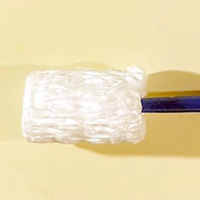 Researchers have developed ultra-absorptive nanofiber swabs that could reduce the number of false-negative tests by improving sample collection and test sensitivity.
Researchers have developed ultra-absorptive nanofiber swabs that could reduce the number of false-negative tests by improving sample collection and test sensitivity.
Scientists develop perovskite solar modules with greater size, power and stability
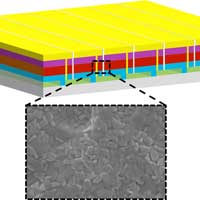 Researchers have created perovskite solar modules with improved stability and efficiency by using a new fabrication technique that reduced defects.
Researchers have created perovskite solar modules with improved stability and efficiency by using a new fabrication technique that reduced defects.
Anti-cancer drug discovery made easier with gold nanostructures
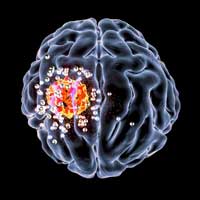 Scientists design a novel 3D cell culture-based electrical platform for high-throughput anti-cancer drug testing using a new type of gold nanostructure.
Scientists design a novel 3D cell culture-based electrical platform for high-throughput anti-cancer drug testing using a new type of gold nanostructure.
Tuesday, January 26, 2021
Researchers use nanomaterials to make 2D diamond clusters at room temperature
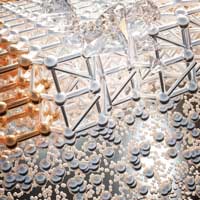 Researchers have discovered that hexagonal boron nitride in layered, molecule-thin 2D sheets can phase transition to a cubic structure at room temperature.
Researchers have discovered that hexagonal boron nitride in layered, molecule-thin 2D sheets can phase transition to a cubic structure at room temperature.
Surround sound from lightweight roll-to-roll printed loudspeaker paper
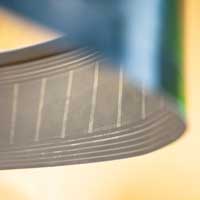 The loudspeakers of the future will not only be as thin as paper, but will also sound impressive.
The loudspeakers of the future will not only be as thin as paper, but will also sound impressive.
Inhalable COVID-19 protection via synthetic nanobodies
 Protein structures helped researchers to increase the potency of simplified antibodies (nanobodies) designed to neutralize SARS-CoV-2.
Protein structures helped researchers to increase the potency of simplified antibodies (nanobodies) designed to neutralize SARS-CoV-2.
2D MXene shows evidence of a magnetic transition
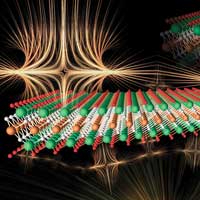 A variety of experiments, including x-ray studies, provided direct evidence of a magnetic transition in a type of 2D transition metal compound called a MXene.
A variety of experiments, including x-ray studies, provided direct evidence of a magnetic transition in a type of 2D transition metal compound called a MXene.
Tungsten-substituted vanadium oxide breathes fresh air into catalyst technology
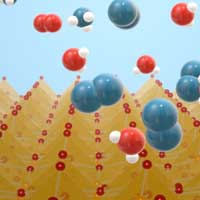 Researchers have created a new tungsten-substituted vanadium oxide catalyst for breaking down harmful nitrogen oxides in industrial exhaust. Their new catalyst material works at lower temperatures and does not suffer major drops in performance when processing 'wet' exhaust, resolving a major drawback in conventional vanadium oxide catalysts.
Researchers have created a new tungsten-substituted vanadium oxide catalyst for breaking down harmful nitrogen oxides in industrial exhaust. Their new catalyst material works at lower temperatures and does not suffer major drops in performance when processing 'wet' exhaust, resolving a major drawback in conventional vanadium oxide catalysts.
Revealing the dynamic mechanism of lead-free quadruple perovskite nanocrystals
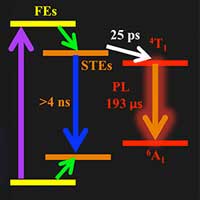 Researchers revealed the luminescence enhancement mechanism of a series of new lead-free quadruple halide perovskite nanocrystals, and prepared high-performance photodetectors.
Researchers revealed the luminescence enhancement mechanism of a series of new lead-free quadruple halide perovskite nanocrystals, and prepared high-performance photodetectors.
Scientists reveal high pressure phase transition of new nanocarbon materials
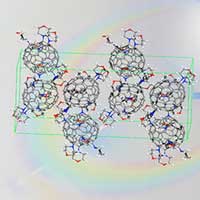 Scientists used the 'zoom-in' phase transition universal method to realize a detailed analysis of the structural deformation and electronic properties of metallofullerenes under high pressure.
Scientists used the 'zoom-in' phase transition universal method to realize a detailed analysis of the structural deformation and electronic properties of metallofullerenes under high pressure.
Researchers construct molecular nanofibers that are stronger than steel
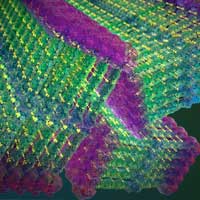 Self-assembly of Kevlar-inspired molecules leads to structures with robust properties, offering new materials for solid-state applications.
Self-assembly of Kevlar-inspired molecules leads to structures with robust properties, offering new materials for solid-state applications.
A benchmark for single-electron circuits
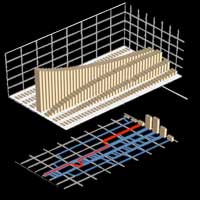 A new methodology for an abstract and universal description of the fidelity of quantum circuits.
A new methodology for an abstract and universal description of the fidelity of quantum circuits.
Monday, January 25, 2021
Revolutionizing rechargeable sodium-ion batteries with doped carbon anodes
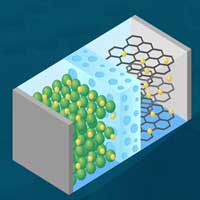 Doping carbon anode material with different atoms increases the performance of sodium-ion batteries.
Doping carbon anode material with different atoms increases the performance of sodium-ion batteries.
Better bundled: new principle for generating X-rays
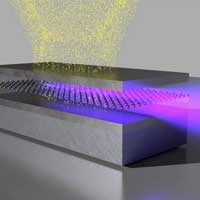 Physicists develop method in which beams are simultaneously generated and guided by sandwich structure.
Physicists develop method in which beams are simultaneously generated and guided by sandwich structure.
Scientists design stretchable electronics to perform better under strain
 By incorporating a patterned material that optimizes strain distribution among transistors, researchers have created stretchable electronics that are less compromised by deformation. They also created several circuit elements with the design, which could lead to even more types of stretchable electronics.
By incorporating a patterned material that optimizes strain distribution among transistors, researchers have created stretchable electronics that are less compromised by deformation. They also created several circuit elements with the design, which could lead to even more types of stretchable electronics.
Research network aims to drive generation of nanostructures with finely focused ion beams
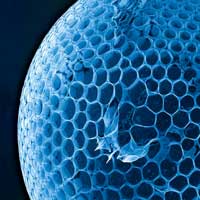 A finely focused ion beam (FIB) is a very useful tool in nanotechnology and analytics. Until now, scientists have mainly used FIB technology to prepare samples for certain microscopic techniques, such as troubleshooting in the semiconductor industry. But FIBs can do much more.
A finely focused ion beam (FIB) is a very useful tool in nanotechnology and analytics. Until now, scientists have mainly used FIB technology to prepare samples for certain microscopic techniques, such as troubleshooting in the semiconductor industry. But FIBs can do much more.
Optimal information about the invisible
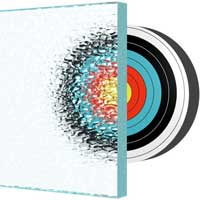 Scientists show that meaningful laser measurement data results can be obtained even in complicated environments.
Scientists show that meaningful laser measurement data results can be obtained even in complicated environments.
New study claims graphene manufacturing is mature enough to produce prototypes and some real-life niche applications
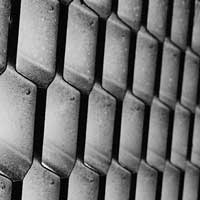 Two new papers roadmap the expected future mass introduction of graphene and related materials in the market.
Two new papers roadmap the expected future mass introduction of graphene and related materials in the market.
Nanomedicine's 'crown' is ready for its close up
 An international team of researchers has developed a new method to better understand how nanomedicines interact with patients' biomolecules.
An international team of researchers has developed a new method to better understand how nanomedicines interact with patients' biomolecules.
Atomically precise noble metal nanoclusters: New emerging metal nanomaterials
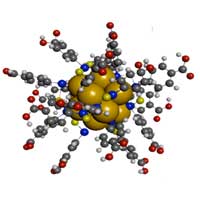 Unlike plasmon gold nanoparticles, which have continuous or semi-continuous energy levels, gold nanoclusters have a distinctive discrete electronic structure and molecular-like properties, such as enhanced photoluminescence, intrinsic magnetism, intrinsic chirality and discrete redox behavior.
Unlike plasmon gold nanoparticles, which have continuous or semi-continuous energy levels, gold nanoclusters have a distinctive discrete electronic structure and molecular-like properties, such as enhanced photoluminescence, intrinsic magnetism, intrinsic chirality and discrete redox behavior.
Microswimmers can learn from bubbles how to swim efficiently
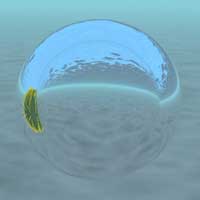 Researchers show that the secret to optimal micro-swimming is out there in the nature. They prove that a microswimmer can increase its swimming efficiency by learning the swimming techniques from an unexpected mentor: an air bubble.
Researchers show that the secret to optimal micro-swimming is out there in the nature. They prove that a microswimmer can increase its swimming efficiency by learning the swimming techniques from an unexpected mentor: an air bubble.
Saturday, January 23, 2021
Reducing traps increases performance of organic photodetectors
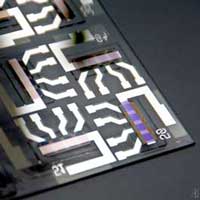 Physicists have discovered that trap states rule the performance of organic photodetectors, ultimately limiting their detectivity.
Physicists have discovered that trap states rule the performance of organic photodetectors, ultimately limiting their detectivity.
Phase diagram for infinite layer nickel superconductors
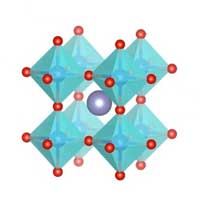 Physicists have developed a method to induce the transition of a rare-earth nickelate from their native perovskite form to infinite-layer structures. This allowed them to build a complete phase diagram of this nickelate superconductor.
Physicists have developed a method to induce the transition of a rare-earth nickelate from their native perovskite form to infinite-layer structures. This allowed them to build a complete phase diagram of this nickelate superconductor.
Friday, January 22, 2021
No more needles?
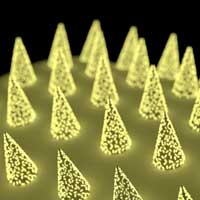 Researchers have developed a biosensing microneedle patch that can be applied to the skin, capture a biomarker of interest and, thanks to its unprecedented sensitivity, allow clinicians to detect its presence.
Researchers have developed a biosensing microneedle patch that can be applied to the skin, capture a biomarker of interest and, thanks to its unprecedented sensitivity, allow clinicians to detect its presence.
New technique builds super-hard metals from nanoparticles
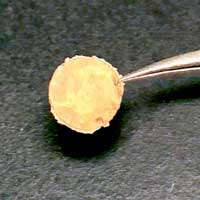 Researchers have shown a way to make bulk metals by smashing tiny metal nanoparticles together, which allows for customized grain structures and improved mechanical and other properties.
Researchers have shown a way to make bulk metals by smashing tiny metal nanoparticles together, which allows for customized grain structures and improved mechanical and other properties.
Researchers demonstrate molecularly woven fabric
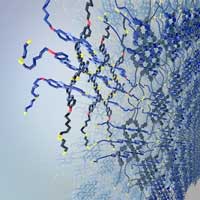 Researchers have developed a way to weave molecular threads in two-dimensional layers. In doing so they have produced a 2D-molecularly-woven fabric that has a thread count of 40-60 million (for comparison, the finest Egyptian linen has a thread count of around 1500 - thread count is the number of strands per inch).
Researchers have developed a way to weave molecular threads in two-dimensional layers. In doing so they have produced a 2D-molecularly-woven fabric that has a thread count of 40-60 million (for comparison, the finest Egyptian linen has a thread count of around 1500 - thread count is the number of strands per inch).
Crystal structures in super slow motion
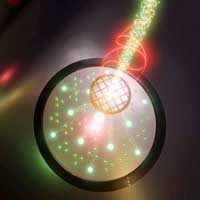 Physicists succeed in filming a phase transition with extremely high spatial and temporal resolution.
Physicists succeed in filming a phase transition with extremely high spatial and temporal resolution.
Enhancing hybrid flow batteries with graphene
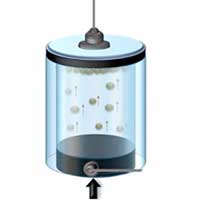 Scientists have found a way to enhance hybrid flow batteries and their commercial use. The new approach can store electricity in these batteries for very long durations for about a fifth the price of current technologies, with minimal location restraints and zero emissions.
Scientists have found a way to enhance hybrid flow batteries and their commercial use. The new approach can store electricity in these batteries for very long durations for about a fifth the price of current technologies, with minimal location restraints and zero emissions.
Bottom-up approach yields highly customizable bioelectronics
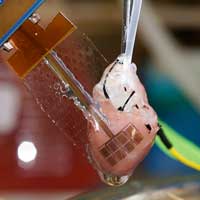 Researchers have designed a bottom-up approach to create carbon-based bioelectronics that could be used in medical research or for devices such as tissue stimulators to treat Parkinson's disease or cardiac problems.
Researchers have designed a bottom-up approach to create carbon-based bioelectronics that could be used in medical research or for devices such as tissue stimulators to treat Parkinson's disease or cardiac problems.
Targeted coating improves graphene oxide membranes for nanofiltration
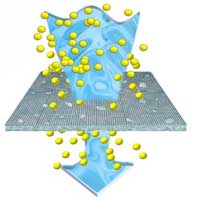 Researchers have developed a stable graphene oxide nanofiltration membrane with uniform pore size to remove organic micropollutants.
Researchers have developed a stable graphene oxide nanofiltration membrane with uniform pore size to remove organic micropollutants.
Researchers extend 4D printing to nanophotonics
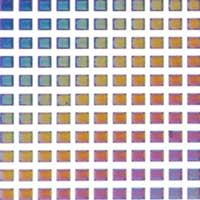 The newly developed shape memory polymer resist, which allows for high-resolution 4D printing, promises a platform for information hiding for optical anti-counterfeiting and tunable photonic devices.
The newly developed shape memory polymer resist, which allows for high-resolution 4D printing, promises a platform for information hiding for optical anti-counterfeiting and tunable photonic devices.
Bringing atoms to a standstill
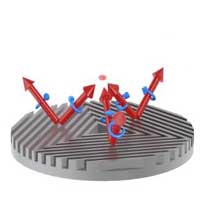 Scientists have miniaturized the optical components required to cool atoms down to a few thousandths of a degree above absolute zero, the first step in employing them on microchips to drive a new generation of super-accurate atomic clocks, enable navigation without GPS, and simulate quantum systems.
Scientists have miniaturized the optical components required to cool atoms down to a few thousandths of a degree above absolute zero, the first step in employing them on microchips to drive a new generation of super-accurate atomic clocks, enable navigation without GPS, and simulate quantum systems.
Single atoms as a catalyst: Surprising effects ensue
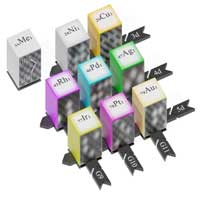 For years, the metal nanoparticles used in catalysts have been getting smaller and smaller. Now, a research team has shown that everything is suddenly different when you arrive at the smallest possible size: a single atom.
For years, the metal nanoparticles used in catalysts have been getting smaller and smaller. Now, a research team has shown that everything is suddenly different when you arrive at the smallest possible size: a single atom.
Enzyme-powered micromotors based on metal-organic porous materials
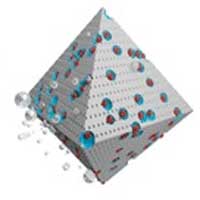 Researchers have successfully designed and fabricated bubble-propelled enzymatic micromotors built from a highly porous metal-organic framework (MOF). These new micromotors might lead to applications for drug delivery and adsorption of pollutants.
Researchers have successfully designed and fabricated bubble-propelled enzymatic micromotors built from a highly porous metal-organic framework (MOF). These new micromotors might lead to applications for drug delivery and adsorption of pollutants.
Subscribe to:
Posts (Atom)
